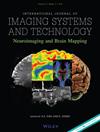Cerebral stroke classification based on fusion model of 3D EmbedConvNext and 3D Bi-LSTM network
IF 3
4区 计算机科学
Q2 ENGINEERING, ELECTRICAL & ELECTRONIC
引用次数: 0
Abstract
Acute stroke can be effectively treated within 4.5 h. To help doctors judge the onset time of this disease as soon as possible, a fusion model of 3D EmbedConvNext and 3D Bi‐LSTM network was proposed. It uses DWI brain images to distinguish between cases where the stroke onset time is within 4.5 h and beyond. 3D EmbedConvNeXt replaces 2D convolution with 3D convolution based on the original ConvNeXt, and the downsample layer uses the self‐attention module. 3D features of EmbedConvNeXt were output to 3D Bi‐LSTM for learning. 3D Bi‐LSTM is mainly used to obtain the spatial relationship of multiple planes (axial, coronal, and sagittal), to effectively learn the 3D time series information in the depth, length, and width directions of the feature maps. The classification experiments on stroke data sets provided by cooperative hospitals show that our model achieves an accuracy of 0.83.基于3D-EmbedConvNext和3D-Bi-LSTM网络融合模型的脑卒中分类
急性中风可在4.5内得到有效治疗 h.为了帮助医生尽快判断这种疾病的发病时间,提出了3D EmbedConvNext和3D Bi-LSTM网络的融合模型。它使用DWI大脑图像来区分中风发作时间在4.5以内的病例 h及以上。3D EmbedConvNeXt在原有ConvNeXt的基础上,用3D卷积代替2D卷积,下采样层使用自注意模块。将EmbedConvNeXt的3D特征输出到3D Bi-LSTM中进行学习。3D-Bi-LSTM主要用于获得多个平面(轴向、冠状和矢状)的空间关系,以有效地学习特征图的深度、长度和宽度方向上的3D时间序列信息。对合作医院提供的中风数据集的分类实验表明,我们的模型达到了0.83的准确度。
本文章由计算机程序翻译,如有差异,请以英文原文为准。
求助全文
约1分钟内获得全文
求助全文
来源期刊

International Journal of Imaging Systems and Technology
工程技术-成像科学与照相技术
CiteScore
6.90
自引率
6.10%
发文量
138
审稿时长
3 months
期刊介绍:
The International Journal of Imaging Systems and Technology (IMA) is a forum for the exchange of ideas and results relevant to imaging systems, including imaging physics and informatics. The journal covers all imaging modalities in humans and animals.
IMA accepts technically sound and scientifically rigorous research in the interdisciplinary field of imaging, including relevant algorithmic research and hardware and software development, and their applications relevant to medical research. The journal provides a platform to publish original research in structural and functional imaging.
The journal is also open to imaging studies of the human body and on animals that describe novel diagnostic imaging and analyses methods. Technical, theoretical, and clinical research in both normal and clinical populations is encouraged. Submissions describing methods, software, databases, replication studies as well as negative results are also considered.
The scope of the journal includes, but is not limited to, the following in the context of biomedical research:
Imaging and neuro-imaging modalities: structural MRI, functional MRI, PET, SPECT, CT, ultrasound, EEG, MEG, NIRS etc.;
Neuromodulation and brain stimulation techniques such as TMS and tDCS;
Software and hardware for imaging, especially related to human and animal health;
Image segmentation in normal and clinical populations;
Pattern analysis and classification using machine learning techniques;
Computational modeling and analysis;
Brain connectivity and connectomics;
Systems-level characterization of brain function;
Neural networks and neurorobotics;
Computer vision, based on human/animal physiology;
Brain-computer interface (BCI) technology;
Big data, databasing and data mining.
 求助内容:
求助内容: 应助结果提醒方式:
应助结果提醒方式:


